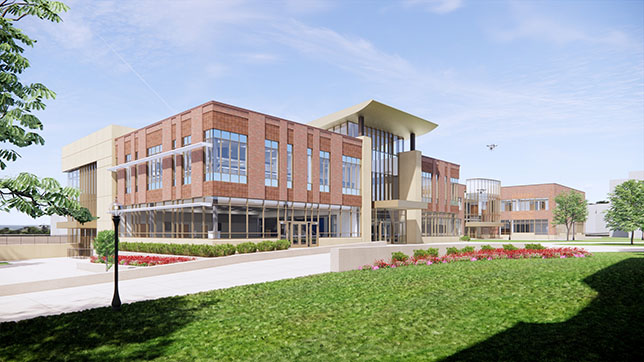Kent State Board Approves College of Aeronautics and Engineering Building Addition
During its quarterly meeting last week, the Kent State University Board of Trustees approved an addition to the university’s Aeronautics and Engineering Building. The College of Aeronautics and Engineering opened in spring 2015, and since then, enrollment has grown enough to require additional space for faculty research and student classes and labs.
According to a press release, the building’s three-story addition will measure in at 41,449 gross square feet and feature classrooms, instructional and research laboratories, active teaching classrooms, cyber classrooms, networking labs, and faculty offices.

Design and construction documents are scheduled for completion by August. After bidding and contract negotiations, groundbreaking should take place in October 2021 for a 14-month construction process. The new facility would open to faculty and students in time for the spring 2023 semester.
The project’s estimated price tag is $19.6 million. Of this, $14.1 million is slated to come from 2020 bond proceeds, $4 million from local funds, and $1.5 million from philanthropic gifts to the university.
A press release states that enrollment in Kent State University’s College of Aeronautics and Engineering has increased by 52 percent since 2019 and by 7 percent since 2020, despite the coronavirus pandemic. A gap between the available workforce and industry needs sets up a wide variety of opportunities for new graduates.
About the Author
Matt Jones is senior editor of Spaces4Learning. He can be reached at [email protected].